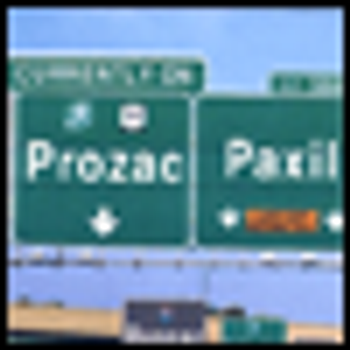
In August, the American Psychological Association Task Force on Appropriate Therapeutic Responses to Sexual Orientation released a report based on its systematic review of research on the effectiveness of sexual orientation change efforts.1

In August, the American Psychological Association Task Force on Appropriate Therapeutic Responses to Sexual Orientation released a report based on its systematic review of research on the effectiveness of sexual orientation change efforts.1

In the past few years, college mental health issues have received increasing attention by the mental health community, the public, administrators, and legislators. Events such as the death of MIT student Elizabeth Shin and the subsequent legal battle, and the series of suicides at NYU a few years ago received prominent media coverage.

It used to be that the answer to the above question was: “One . . . but he or she must really want to change.” Now that we are in the DSM process, many other things must be considered. We have watched as the Board assembled the Task Force and Work Groups for almost 2 years, choosing among expertise, years in the field, academic appointments, geographic distribution and freedom from excessive attachments to pharmaceutical and medical device manufacturers, etc, to complete what appears to be a very scientific, secret recipe for “DSM stew.”

The FDA’s new rule on “expanded access programs” would allow pharmaceutical companies to give seriously ill patients broader access to investigational drugs outside of clinical trials. A limited number of expanded access programs were created in the past under sketchy FDA rules; the 2 new allied rules-one on the conditions drug companies must meet to create a program, the other on how they can charge for the drugs-ostensibly give pharma a wider berth. Moreover, psychotropic drugs can be provided under the clarified policy.


Those who know Sacha Baron Cohen will tell you he is nothing like Brüno or the other characters he impersonates. The third son of an orthodox Jewish family, he grew up in a suburb of London, went to fancy British schools, and spent a year living in Israel. He read history at Christ’s College, Cambridge, where an interest in the role of American Jews in the Civil Rights Movement led to his thesis on the 1964 murders of James Chaney, Andrew Goodman, and Michael Schwerner in Mississippi. Not the biography of a man you would imagine inventing Ali G, an American ghetto rapper; or Borat, an anti-Semitic TV reporter from Kazakhstan; or Brüno, a gay Austrian fashionista who wants to be as famous as that other Austrian, Adolf Hitler. These characters have made Baron Cohen one of the preeminent icons of popular culture.

Anxiety disorders are one of the most common psychiatric disorders in children and adolescents, but they often go undetected or untreated. Identification and effective treatment of childhood anxiety disorders can decrease the negative impact of these disorders on academic and social functioning in youth and their persistence into adulthood.

Eating disorders are serious and potentially life-threatening, associated with severe food restriction, overexercise, malnutrition, and distorted thinking about body shape and weight or binge eating and purging behaviors.

What safeguards does Psychiatric Times build into its review policies to avoid conflicts of interest (COIs)? Do these policies apply to the “supplements” sometimes mailed out with the regular publication?

As the nation’s uninsured population climbs to 46.3 million and Congress grapples with health care reform, the American Psychiatric Association (APA) has intensified its efforts to advocate for a public health insurance option, insurance market reforms, changes in Medicare’s physician payment system, and preservation of parity for mental health.

There is no magic moment when it becomes clear the world needs a new DSM. The publication dates of previous DSMs were determined by revision dates of the International Classification of Diseases (ICD). Thus, DSM-I appeared with ICD-6 in 1952; DSM-II with ICD-8 in 1968; DSM-III with ICD-9 in 1980; and DSM-IV with ICD-10 in 1994.

A 43-year-old woman presented to the ED at 5:30 am on a weekday. While being triaged, she indicated she was hesitant to speak with anyone. The patient reported to the consulting psychologist that she had been deployed to Iraq as reservist nurse 2 years earlier. During that time, an unknown assailant whom she believed to be an Iraqi national working with military security forces sexually assaulted her. The veteran confided that she had been too embarrassed and ashamed to report the assault.

A 24-year-old veteran of Operation Iraqi Freedom (OIF) presents to the ED mid-morning on a weekday. While the veteran is waiting to be triaged, other patients alert staff that he appears to be talking to himself and pacing around the waiting room. A nurse tries to escort the veteran to an ED examination room. Multiple attempts by the ED staff and hospital police-several of whom are themselves OIF veterans-are unsuccessful in calming the patient or persuading him to enter a room.

A 29-year-old veteran came to the ED complaining of headaches and uncontrolled pain in his upper quadrant. He had been discharged from the military after he sustained a blast injury during duty as a Marine in Iraq. His right arm had been amputated.

Since the time of Homer, warriors have returned from battle with wounds both physical and psychological, and healers from priests to physicians have tried to relieve the pain of injured bodies and tormented minds.1 The soldier’s heartache of the American Civil War and the shell shock of World War I both describe the human toll of combat that since Vietnam has been clinically recognized as posttraumatic stress disorder (PTSD).2 The veterans of Operation Iraqi Freedom (OIF) and of Operation Enduring Freedom (OEF) share with their brothers and sisters in arms the high cost of war. As of August 2009, there have been 4333 confirmed deaths of US service men and women and 31,156 wounded in Iraq. As of this writing, 796 US soldiers have died in the fighting in Afghanistan.3

Synecdoche, New York, screenwriter Charlie Kaufman’s directorial debut, was greeted with Best Film of the Year from critics and catcalls from moviegoers. It is a film that only someone like Psychiatric Times’ Editor in Chief, Dr Ron Pies, could fully understand (ie, a psychiatrist who knows about arcane neuroscience and literature). The problems start with the title. Most people have no idea what “synecdoche” means or how to pronounce it. Looking it up is not much help. The Oxford English Dictionary defines it as “a figure [of speech] by which a comprehensive term is used for a less comprehensive or vice versa, as whole for part or part for whole, genus for species or species for genus, etc.” The commentary adds to the confusion: “Formerly sometimes used loosely or vaguely, and not infrequently misexplained.” No matter. Most critics did not explain it anyway, emphasizing instead its pronunciation-si-NECK-doh-kee-which sort of rhymes with Schenectady (sken-ECK-tuh-dee), where the film “seems” to be set. They outdid each other, too, in their praise of the film, while being surprisingly candid about their inability to explain it. Roger Ebert called it “Joycean,” with the richness of literature. He enthused, “It’s about you. Whoever you are,” even though he conceded that he had not fully understood it. As for the ambiguity of the title, he advised readers to “get over it.”

This is the third and final installment in a series on biophysical mechanisms of functional magnetic resonance imaging (fMRI) technologies. My overarching goal has been to explain why great care must be exercised when interpreting data derived from these magnets. The inspiration for the series came as I was reading a magazine article while waiting for a plane to take off-my reaction to what I read may have resulted in a bit of trauma to the seat pocket in front of me.

Dr Stone’s Pharmonitor essay justly skewers drug promotion hubris disguised as a CME article.

Why do people get addicted? Of the countless books that have been published on this topic, this is the first that focuses on the self-medication hypothesis (SMH). Understanding Addiction as Self Medication is largely based on the experiences of the authors and other clinicians with individuals who struggle with addiction.

I just read and enjoyed “Treatment-Resistant Bipolar Disorder”1 at www.PsychiatricTimes.com, and wanted to thank the author for pulling together a great deal of useful information in a succinct and lucid format.

Restless legs syndrome (RLS) is a neurosensory disorder first described by Sir Thomas Willis in 1672. As early as the 19th century, Theodor Wittmaack observed the comorbidity of RLS with depression and anxiety. He termed this condition “anxietas tibiarum” and believed it to be a form of hysteria.

The congressional drive to reform health care could result in a 5% Medicare bonus for psychiatrists because of a provision in a prospective bill that would also have an impact on private insurance payment. As the House and Senate struggle to turn concepts into legislative language, one thing Democrats and Republicans agree on is that primary care physicians should be better compensated, probably with money taken out of the pockets of some specialties.

The validity of any study involves the sequential assessment of confounding bias, followed by chance, followed by causation.

This book is well-written and concise. It provides an overview of ECT that is evidence-based yet understandable by the average person. The author effectively uses clinical anecdotes to provide a “face” for the science. The book is organized in a user-friendly way.

A graduating resident recently told me that a psychiatric group attempting to recruit him informed him that he would have 10 minutes for medication appointments and 30 minutes for new patient evaluations. He was horrified. (So was I.)

In our last installment, we discussed a familiar finding from the National Comorbidity Survey Replication (NCS-R): the peak age of onset for any mental health disorder is about 14 years. In an attempt to explain these data, we are exploring some of the known developmental changes in the teenaged brain at the level of gene, cell, and behavior.

The need for expert supervision of residents and other health professionals by psychiatrists is growing as a result of the increased demand for accountability by third parties and the expanded number of clinical specialists seeking supervision in psychiatry. The Accreditation Council for Graduate Medical Education has placed professional competency of graduating residents in the national spotlight, and insurers are increasingly scrutinizing patient care provided by trainees and oversight provided by their supervisors.

Poetry of The Times September 2009

My life as a poet changed dramatically in 1999 when Psychiatric Times founder John L. Schwartz, MD, and editor Christine Potvin decided to include my poems as a monthly column in Psychiatric Times. With the creation of “Poetry of the Times,” I experienced a tremendous jolt of artistic energy, a sense of affirmation, and a huge boost in confidence. Writing the column continues to propel my poetry 10 years later.

“Do poets need to be mentally ill to produce great work? Is creativity heightened by treatment, or does treatment reduce emotional pain to the extent that the poet no longer has anything to say?”